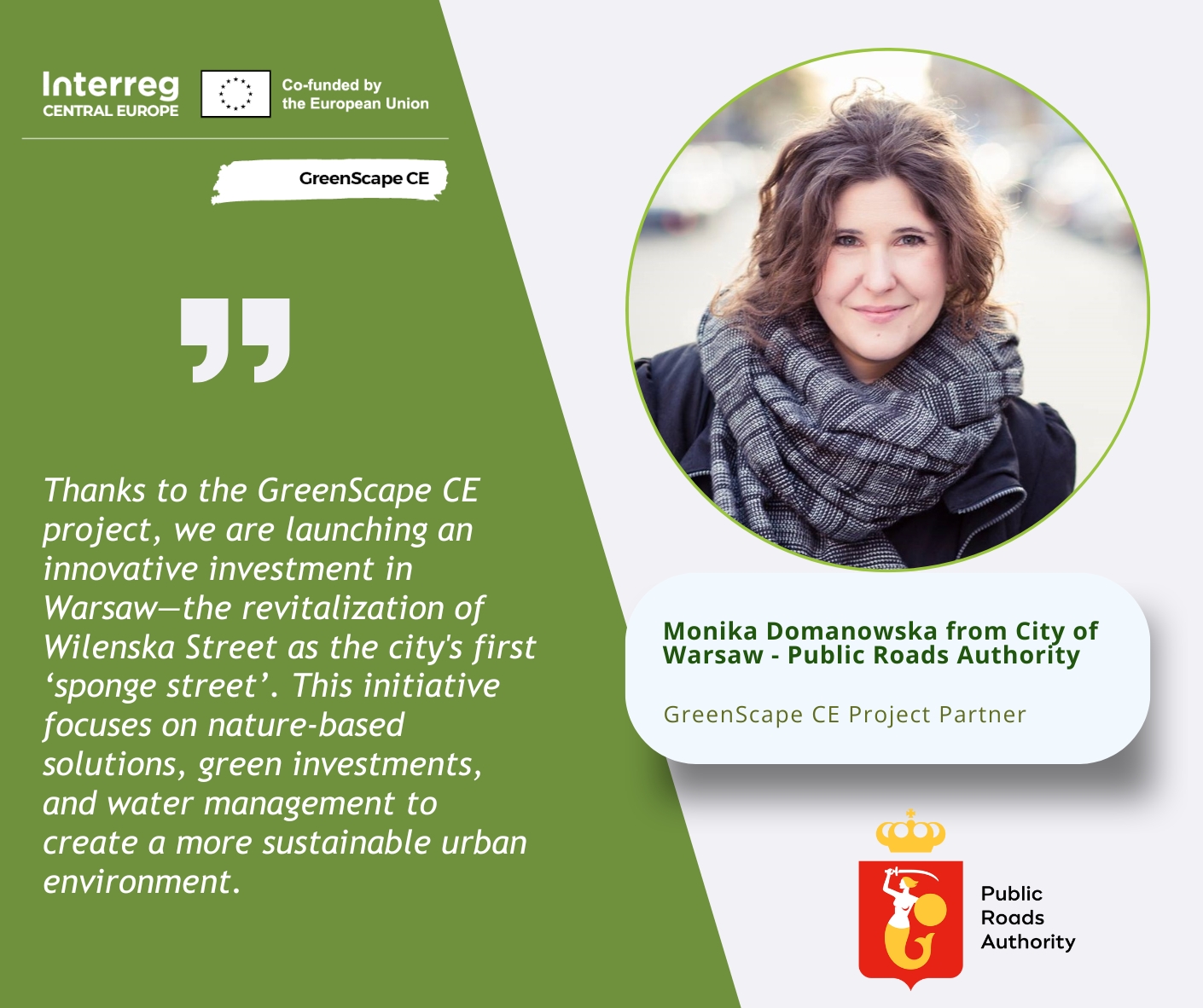The project demonstrates how urban streetscapes can be redesigned to absorb rainwater, reduce flooding risks, and enhance overall livability. By incorporating permeable surfaces, green areas, and water retention systems, Wilenska Street is being reimagined as a multifunctional space that contributes to climate resilience, biodiversity, and community well-being.
Key Features of the Wilenska Street Pilot:
• Nature-based infrastructure: Designed to retain and manage stormwater naturally, reducing pressure on urban drainage systems.
• Urban innovation: A flagship example of how cities can translate environmental policy into visible, functional change on the ground.
• Sustainability through design: A demonstration of how public spaces can integrate ecological functions while serving mobility and social needs.
According to Monika Domanowska, representing the Warsaw City Roads Authority, this pilot reflects the city’s growing commitment to sustainable, climate-conscious investments. It also contributes directly to GreenScape CE’s broader objectives of testing scalable models that other Central European cities can adopt.
The Wilenska Street revitalisation is not only a local achievement—it sets a regional precedent for embedding NbS in the urban fabric and advancing resilient, liveable cities.
